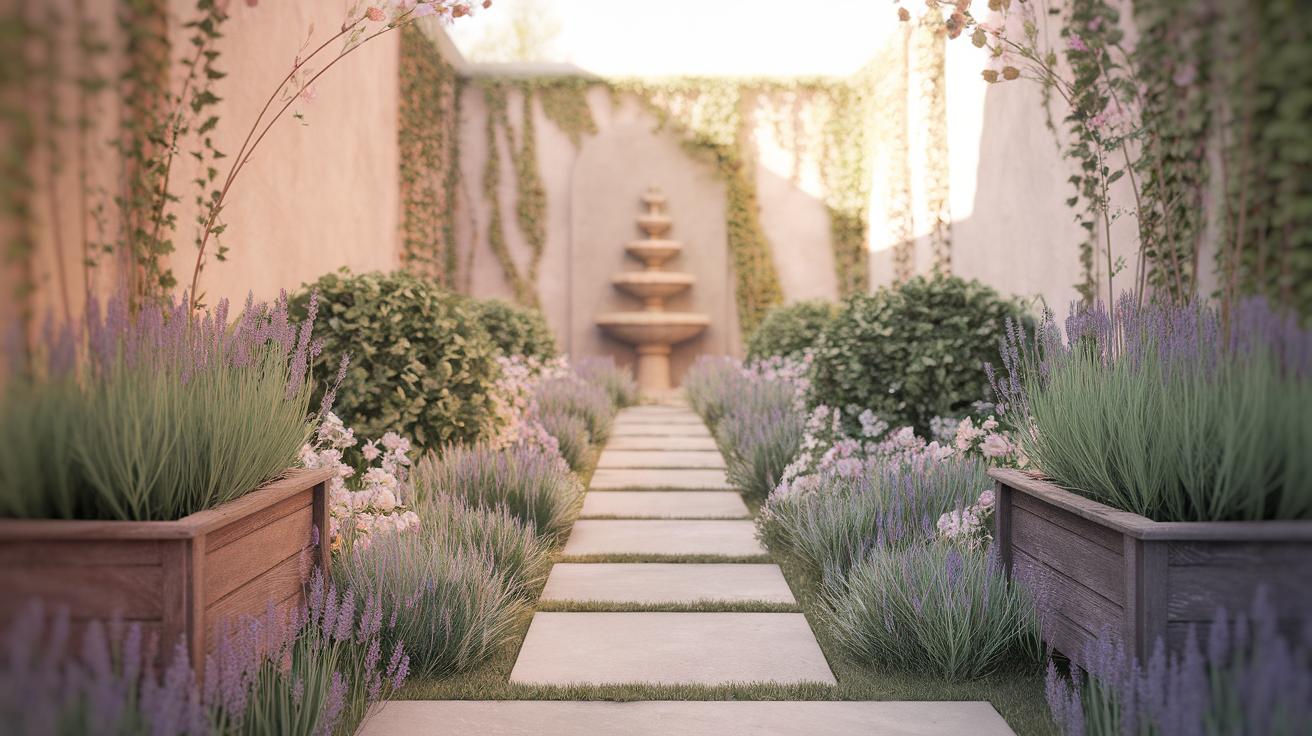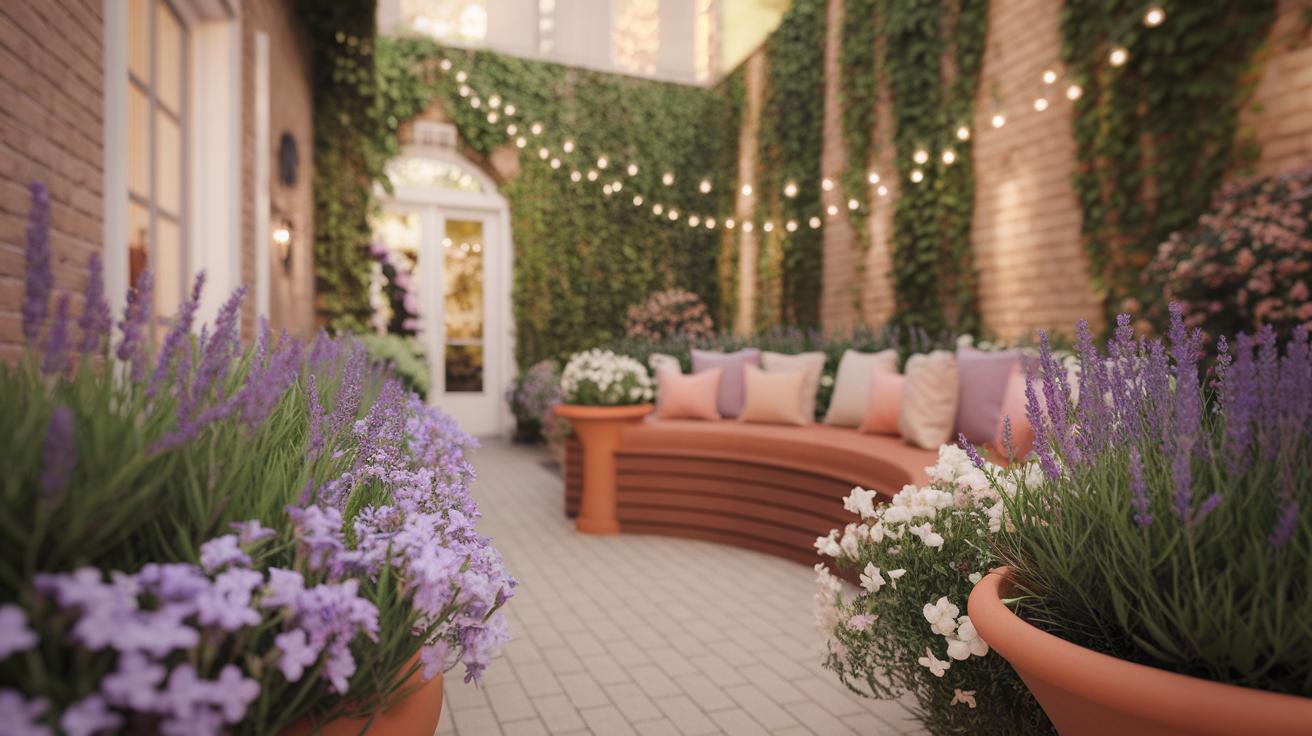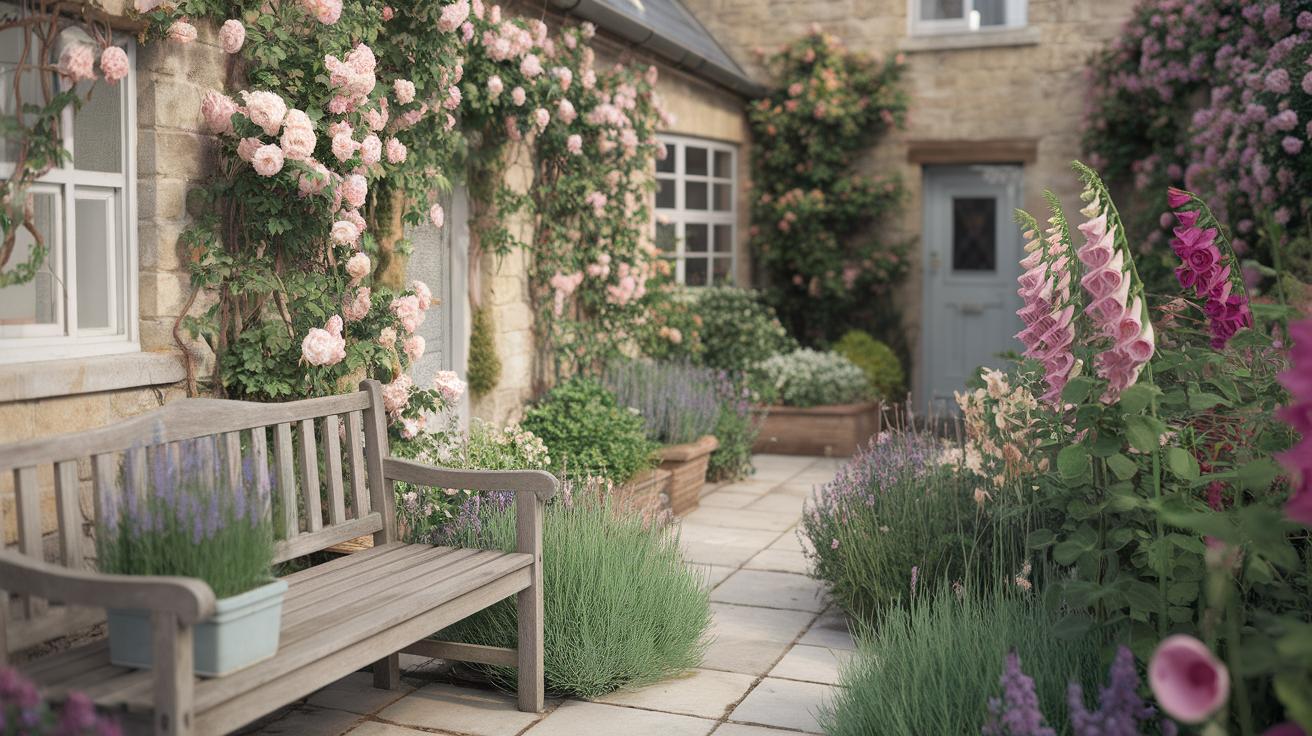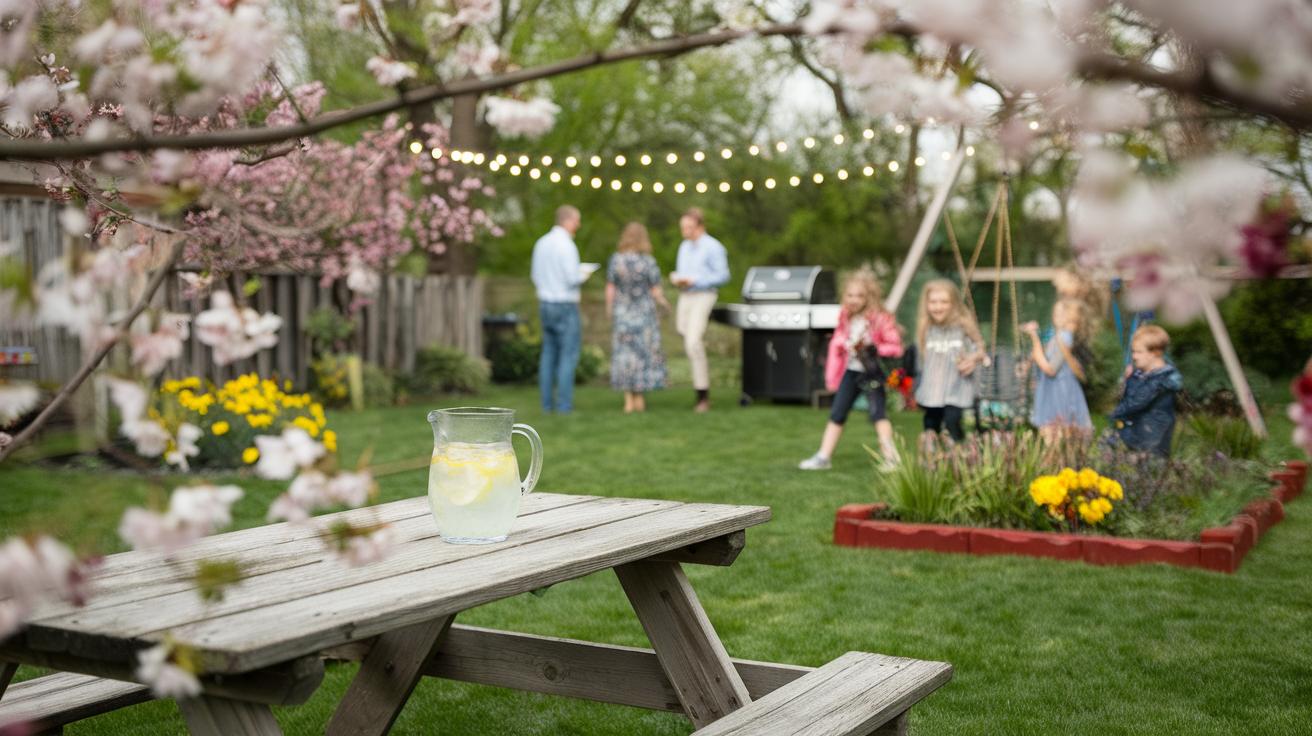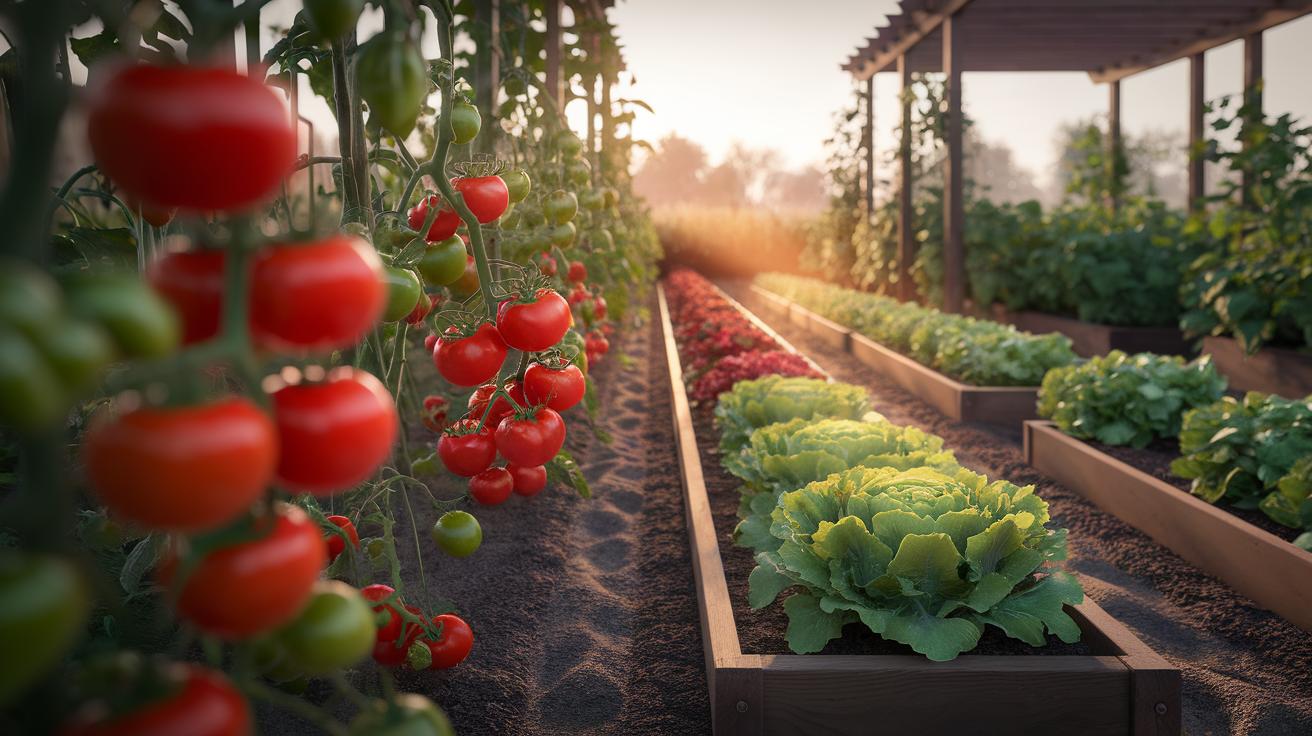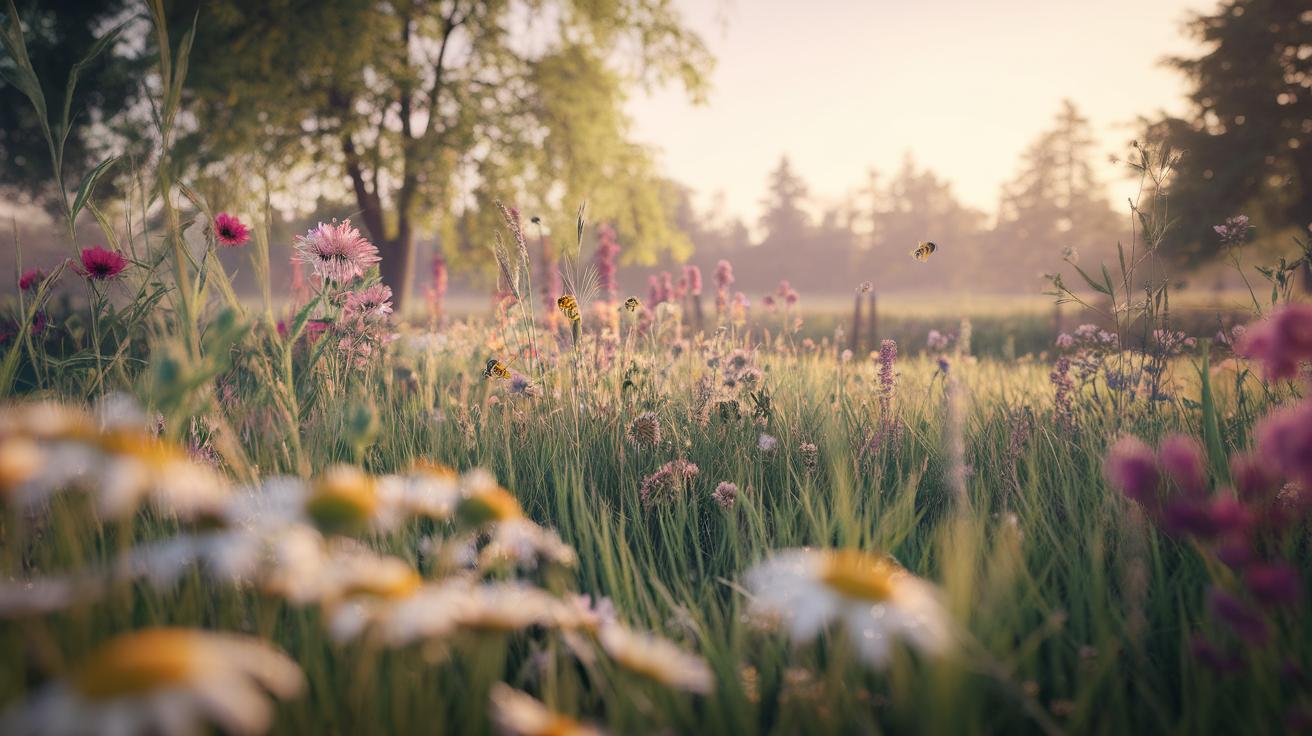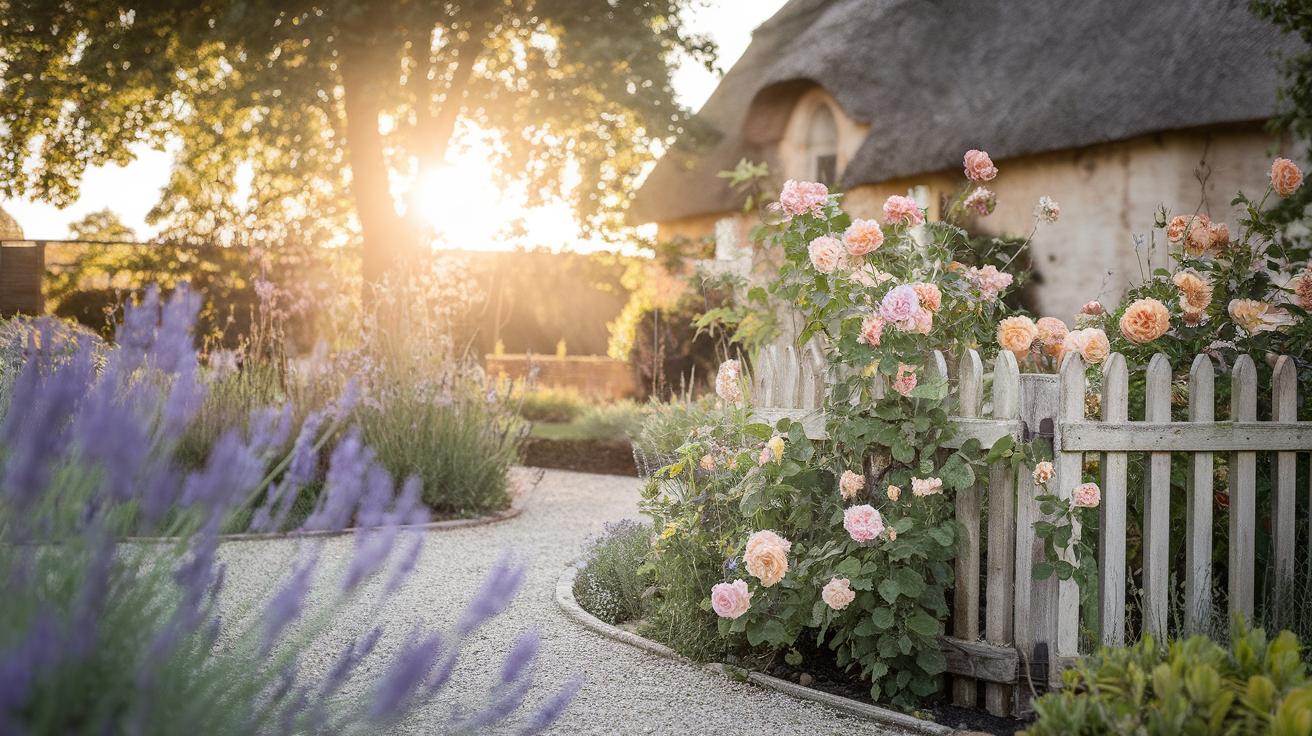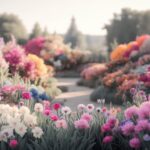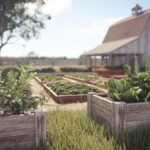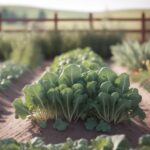Introduction
Australian native gardens offer a unique way to connect with the natural environment of Australia. Growing native plants in your garden supports local wildlife and requires less water and maintenance compared to non-native gardens. Understanding the diversity and characteristics of Australian native plants helps you choose the right plants that fit your garden’s conditions and style.
Creating a garden with Australian native plants demands planning and knowledge. Your garden can reflect different Australian landscapes, from heathlands to woodlands and wetlands. This article shares clear steps to help you design, build, and maintain a beautiful garden filled with native Australian flora that thrives year-round.
Understanding Australian Native Plants
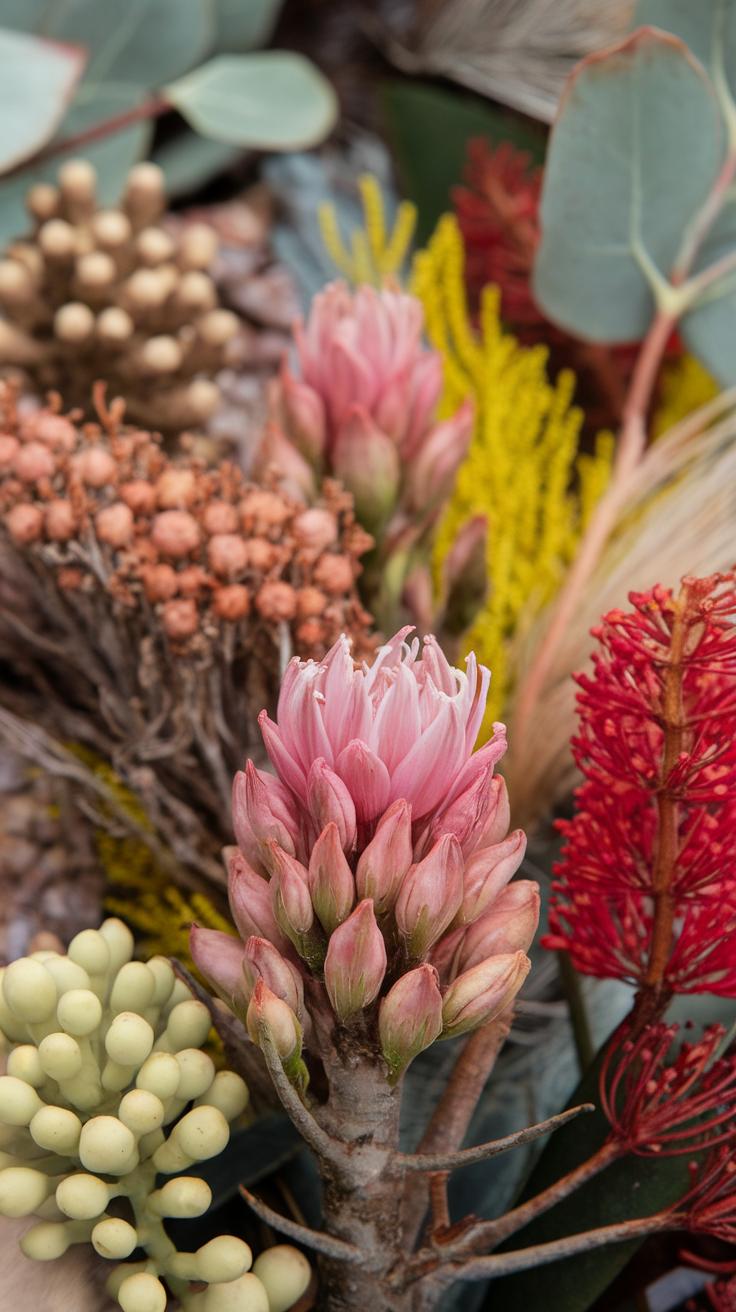
Australian native plants are species that have developed and lived in Australia’s environment for thousands of years. They represent a wide variety of forms—from tall eucalyptus trees and slender grasses to vibrant wildflowers and tough shrubs. Each species adapts specifically to local conditions like soil type, rainfall, and temperature.
Most native plants have features like tough leaves, deep roots, or fire resistance. These traits help them survive in harsh and often dry Australian climates. They play a vital role in ecosystems by providing food and shelter for native animals such as birds, insects, and mammals.
Choosing native plants for your garden means you support these natural processes. When you grow plants that evolved here, you contribute to the health of your local environment and help maintain biodiversity. What native species have you noticed thriving around your neighborhood?
What Makes a Plant Native to Australia
A native plant grows naturally in Australia without human introduction. These plants evolved over millions of years, adapting to the continent’s distinct environments. Australia’s isolation created unique ecosystems that shaped plant species through processes like drought tolerance and nutrient-poor soil survival.
Changes in climate, soil types, and fire regimes influenced how native plants developed. For example, many plants have special bark to survive fires or leaves that reduce water loss. Understanding this evolution helps you appreciate why native plants suit Australian gardens better than imported species.
Think about how your garden’s conditions match those where native plants evolved. Which qualities of native plants align with your garden’s environment?
Benefits of Growing Native Plants
Native plants support local wildlife by providing food, shelter, and breeding sites. For example, banksias and grevilleas attract nectar-feeding birds and insects. Choosing native species helps create a balanced garden ecosystem.
These plants also use water efficiently. Many are drought-tolerant, requiring less irrigation once established. They grow well in local soils, which means you avoid adding complex fertilizers or soil amendments.
Native gardens usually need less maintenance because the plants handle pests and diseases naturally. This saves you time and effort while keeping your garden healthy.
What if you could create a garden that thrives with little work, saves water, and supports local life? Native plants can help you achieve that balance.
Planning Your Australian Native Garden

Planning your native garden begins with understanding the conditions where your plants will grow. Start by examining your garden’s soil. Is it sandy, clayey, or loamy? Each type affects how water and nutrients flow to plant roots. Try digging a small hole to see how fast water drains. This helps you pick plants suited to your soil’s drainage.
Next, observe sunlight patterns throughout the day. Some spots may get full sun, while others stay shaded. Think about how this changes with seasons. Also, check your garden’s exposure to wind and rainfall. Local climate, including temperature swings, influences what native plants will thrive.
Assessing these factors ensures the right plant choices, saving time and effort later. Ask yourself: Where does the sun hit hardest? Does water pool in some areas? These answers guide you toward creating a garden that fits your space and environment.
Assessing Your Garden Site
Knowing your soil type helps choose native plants that will root well. Clay soils hold water but may lack air, while sandy soils drain quickly but may dry out fast. Testing soil texture and pH can give you a clearer picture.
Sunlight exposure determines which plants flourish. For example, kangaroo paws prefer full sun, while native ferns like shaded spots. Notice areas that stay wet or dry and watch how they react after rain.
Drainage affects whether plants can avoid root rot or drought stress. You can improve poor drainage by adding organic matter or choosing plants that tolerate wet feet.
Local climate is another key factor. Coastal gardens face salt spray, while inland areas may experience frost. Matching plants to climate zones reduces maintenance and supports growth.
Setting Garden Goals
Decide what your garden should achieve before picking plants. Do you want to attract birds and bees? Then focus on nectar-rich shrubs and flowering trees. Think about species like bottlebrush or grevillea that support wildlife.
If water conservation is a priority, select drought-tolerant natives like acacias and eucalyptus that thrive with little irrigation.
For an ornamental look, consider plants that provide year-round color, texture, and form. Banksias and native daisies offer visual interest through changing seasons.
Identify your main goal and list secondary priorities. This helps you build a focused plant palette and design that meets your needs and respects your site conditions.
Choosing Suitable Native Plants

When selecting native plants for your garden, focus on how they match your site’s conditions and overall style. Consider soil type, sunlight, and water availability you identified during your planning stage. Choose plants that naturally thrive in these conditions to reduce maintenance and water use.
Think about what purpose each plant will serve. For example, taller trees can offer shade and structure, while smaller shrubs can fill spaces and add color. Use plants that reflect the look you want—whether that’s a formal garden or a wild, natural area.
Don’t overlook local species used by native wildlife. Plants like the Kangaroo Paw or Lilly Pilly attract birds and insects, helping your garden become a living ecosystem. Ask yourself, which plants will suit not just your space but also your lifestyle and gardening goals?
Selecting Trees and Shrubs
Trees act as the backbone of your garden, providing shade and defining spaces. Choose species like the Eucalyptus for dappled shade or a Banksia to create a strong structure. Consider their mature size so they don’t overcrowd your garden later.
Shrubs add layers and fill gaps between trees and smaller plants. Native shrubs like Correa and Grevillea attract birds and bees. These plants support native fauna by providing food and shelter. When selecting, think about flower time and growth habits to ensure year-round interest.
Ask which species provide the best habitat for your local wildlife and fit well with your garden’s size. Avoid fast-growing or invasive types that could overwhelm other plants.
Incorporating Grasses and Groundcovers
Grasses and groundcovers are key for reducing weeds and protecting your soil. Choose plants like Lomandra or Dianella, which form dense clumps to shade out weeds and retain moisture. Their root systems also help prevent erosion, especially on slopes.
Groundcovers such as native violets or creeping boobialla create low-growing patches that fill empty soil and provide habitat for small creatures. These plants help your garden feel complete and healthy by creating layers close to the ground.
When planting grasses and groundcovers, ask how they will interact with other plants. Can they spread without smothering neighbors? Select species that support your garden’s balance and encourage beneficial insects.
Designing Garden Layouts with Native Plants
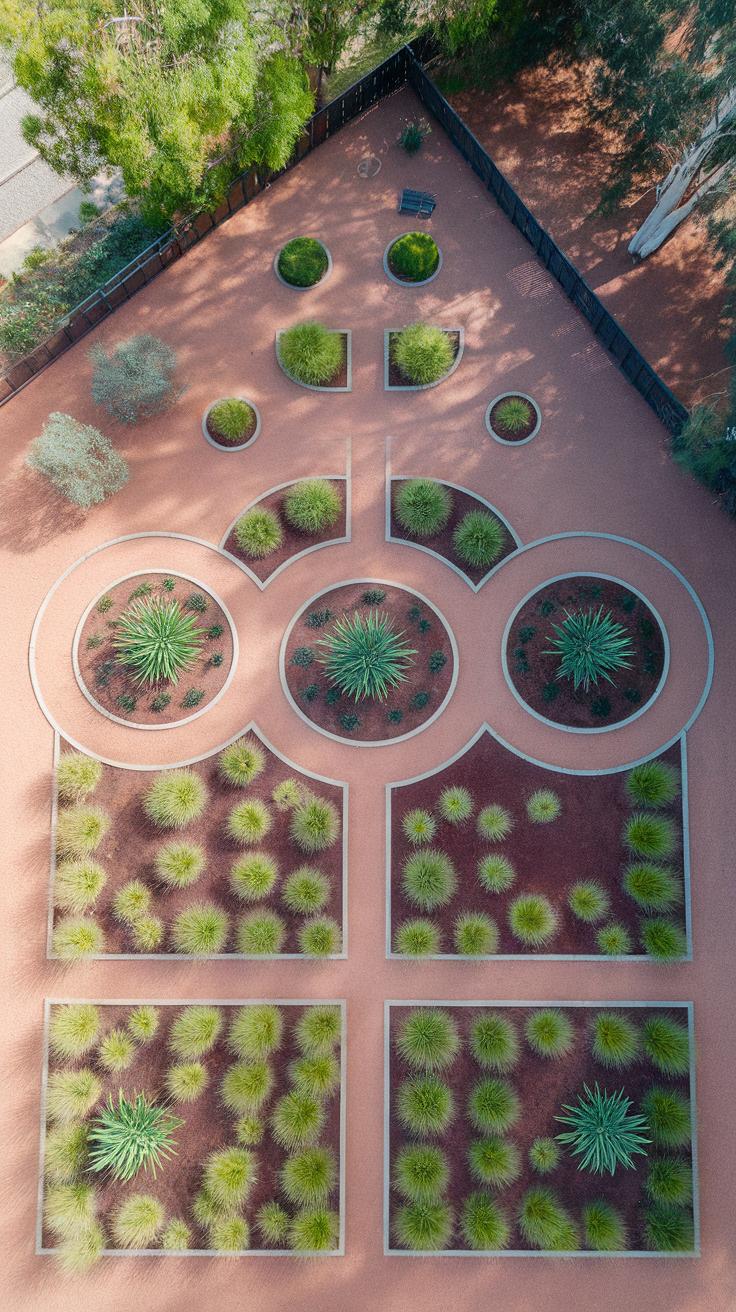
Creating an Australian native garden means working with nature’s patterns. Grouping plants by their needs helps you save water and keep plants healthy. When you place species that need similar moisture levels together, watering becomes efficient. You avoid overwatering some plants while underwatering others, reducing your effort and protecting water resources.
Layering plants is another key principle. Arrange tall trees at the back or center, medium shrubs in the middle, and low groundcovers near paths or edges. This setup mimics natural habitats where plants compete for sunlight and space. It also offers shelter and food for birds and insects, enriching your garden’s ecosystem.
Water zoning involves mapping your garden according to how much water each area receives naturally or from irrigation. Place thirsty plants where water gathers or where you can water easily. Drought-tolerant species go on dry slopes or sunny spots. This approach respects the land, making your garden resilient and low maintenance. How could adjusting your layout improve your garden’s health?
Grouping Plants by Water Needs
Group your native plants based on how much water they need. For example, swamp paperbarks love damp soil and do well near ponds or low areas that collect water. Meanwhile, kangaroo paws and banksias prefer drier ground and make great neighbors on slopes or sunny spots.
This method cuts water waste because you water each group according to its needs. You don’t have to water the entire garden the same way. Plants receive the right amount of moisture, which prevents root rot or drought stress. You spend less time worrying about overwatering or underwatering.
Think about your outdoor space. Are there sections that stay wet after rain? Are some areas hotter and drier? Grouping plants by these conditions means your garden will be happier. Could grouping by water needs change how you plan your garden?
Using Plant Layers and Diversity
Layering native plants creates a garden that looks natural and supports wildlife. Start with tall eucalyptus trees or wattles to form the upper canopy. These provide shade and shelter. Below them, plant medium shrubs like grevilleas or tea trees. These offer food and cover for birds and insects.
Fill in empty spaces with low-growing plants such as native grasses or groundcovers like pigface. These protect soil, reduce weeds, and add texture to your garden. Different plant heights make your garden visually interesting and closer to how native forests grow.
Diversity also improves resilience. A mix of species and layers can survive pests, diseases, or weather changes better than single-species gardens. Consider how you can stack your plants in layers to build a thriving ecosystem in your own backyard.
Establishing Your Garden
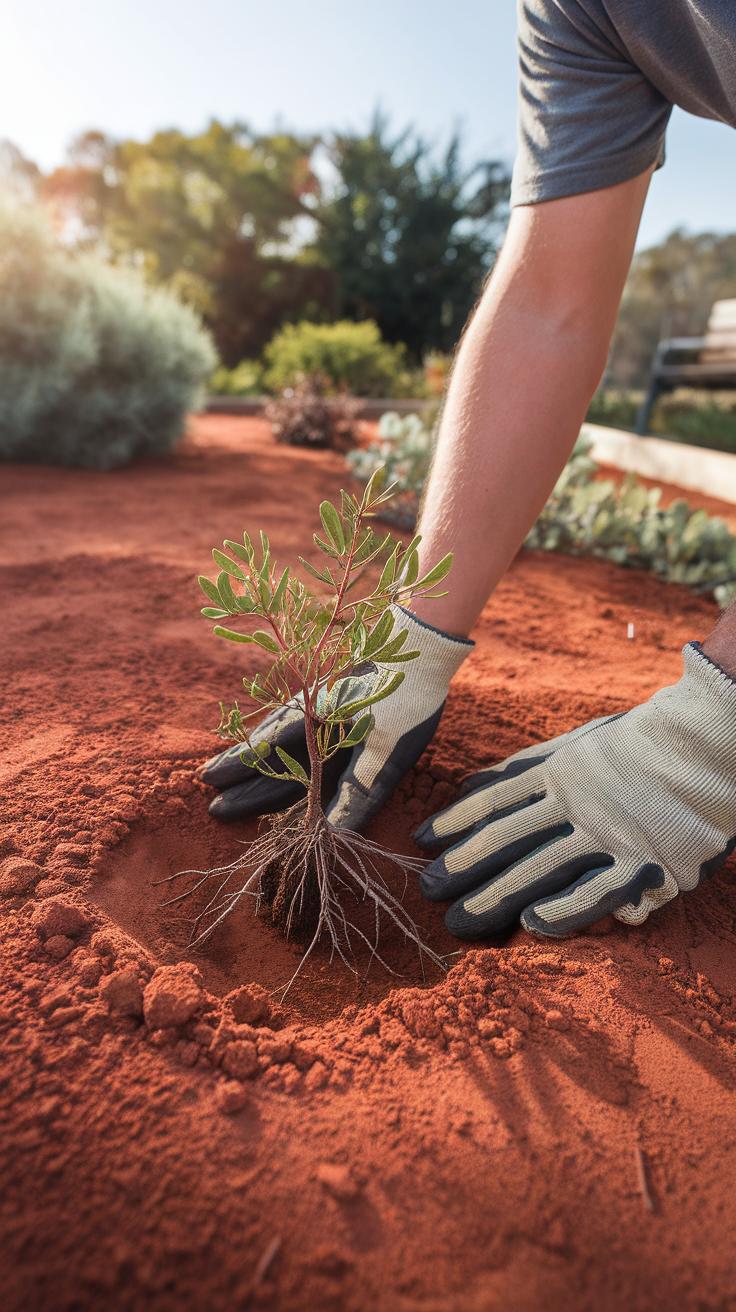
Preparing Soil for Planting
Start by clearing your garden area of all weeds. Pull them out by hand or use a hoe to avoid disturbing the soil too much. Removing weeds now means less competition for your native plants later. Next, assess your soil texture. Native plants generally do well in sandy or loamy soils, but if your soil feels heavy or clay-like, mix in organic matter such as compost or aged mulch to improve drainage and structure. Good drainage prevents roots from sitting in water, which can cause rot. Test drainage by digging a small hole and filling it with water; it should drain within a few hours. Adjust your soil accordingly before planting to give your native plants the best start.
Best Practices for Planting
Dig planting holes twice as wide as the root ball but only as deep. This allows roots to spread easily without sinking too deep where they could suffocate. Plant your natives at the soil level they were in their pots to avoid stress. Space plants according to their mature size to prevent overcrowding and ensure airflow. For example, banksias need about a meter between plants. After planting, water each plant thoroughly to settle the soil around roots. Water again after a few days to keep the soil moist but not wet. Think about your watering schedule: would daily light watering help or is less frequent but deeper watering better in your area? Establishing your natives with the right planting depth and watering sets a strong foundation for growth.
Watering and Maintenance Practices
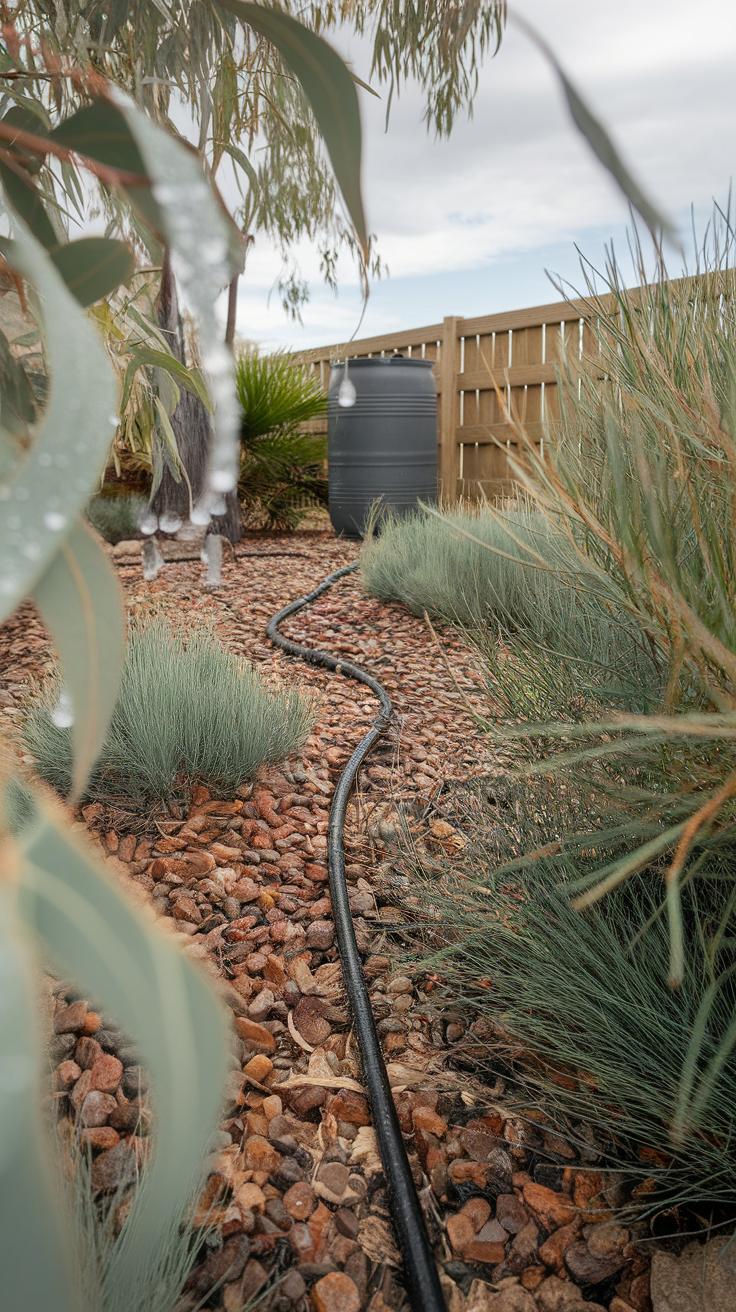
Watering your Australian native garden in the right way helps plants grow strong and survive dry spells. Water deeply but less often to encourage roots to grow downwards. This strengthens your plants and reduces the need for frequent watering. If you water lightly every day, roots stay shallow and become weak, making the garden less drought-tolerant.
Mulching around plants holds moisture in the soil and cools roots. Use natural mulch like bark chips or fallen leaves. A 5 to 10 cm layer of mulch can cut water loss by half. When you mulch, water is absorbed better, and weeds struggle to grow. Have you noticed the difference mulch makes in your garden’s moisture?
Smart Watering Techniques
Water your garden early in the morning or late in the afternoon to reduce evaporation. Focus on the base of plants, avoiding wetting the leaves. Soaker hoses or drip irrigation systems deliver water right where roots need it. This method conserves water and limits fungal diseases.
Check soil moisture before watering by sticking your finger about 5 cm into the ground. If it feels dry, it’s time to water deeply. After watering, give the soil time to dry a bit between sessions. This approach teaches plants to use water efficiently and promotes healthier growth.
Routine Maintenance Needs
Pruning helps your native plants keep their shape and encourages new growth. Remove dead or diseased branches to prevent problems from spreading. Some plants, like Grevilleas, benefit from light pruning after flowering to maintain a tidy appearance.
Look regularly for pests such as scale insects or aphids. Catching infestations early lets you use natural controls, like releasing ladybugs or applying organic sprays. Seasonal clean-ups remove fallen leaves and debris that can hide pests and disease.
Keeping up with these simple tasks lets your native garden flourish. What maintenance habits fit best with your schedule and garden style?
Encouraging Wildlife with Your Garden
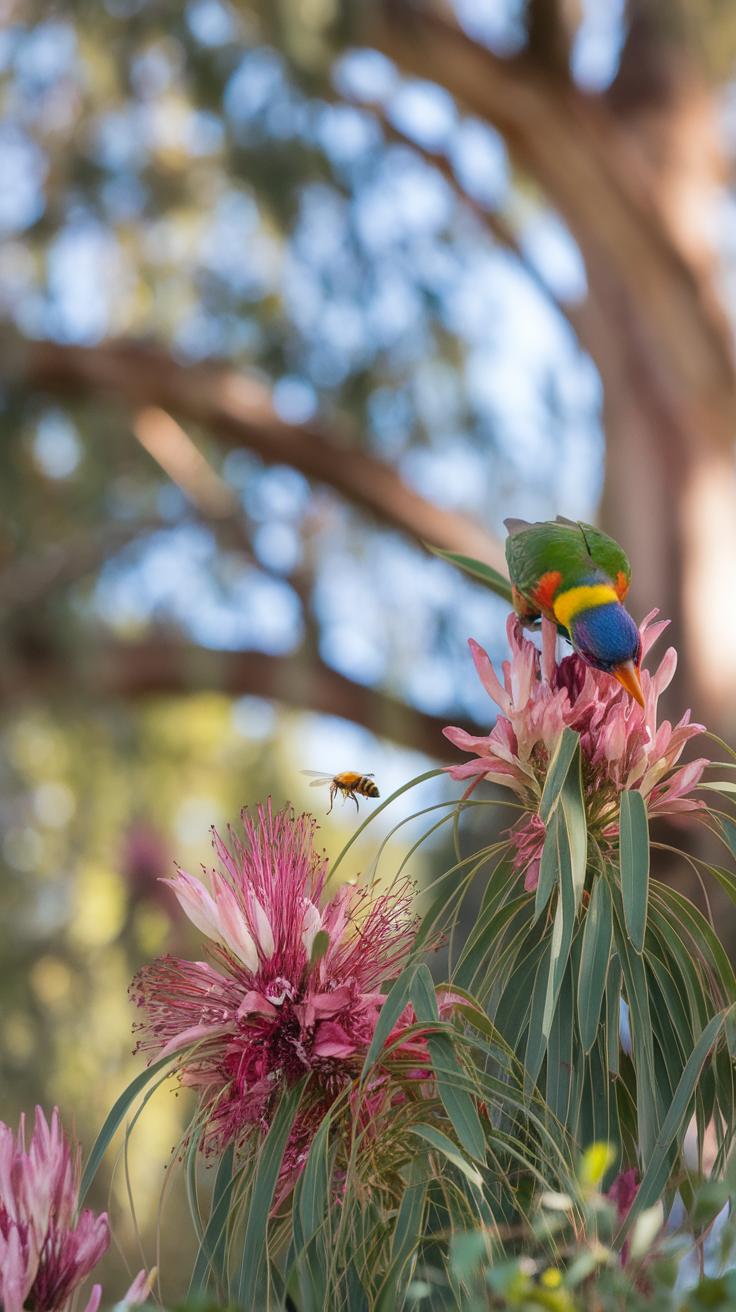
Your Australian native garden can become a sanctuary for local wildlife. Native plants provide natural food sources like nectar, seeds, and berries. These, in turn, attract birds, butterflies, and beneficial insects that rely on native flora.
Creating a wildlife-friendly garden means more visits from kookaburras, honeyeaters, and native bees. Think about how often you see these animals in your neighborhood. By planting native species, you invite them into your outdoor space.
Native wildlife also helps maintain your garden’s health. Birds control pests by eating insects, while pollinators support plant reproduction. What kinds of wildlife do you want to see in your garden?
Focus on creating a diverse environment. Mix shrubs, trees, and flowering plants to appeal to different species. This diversity encourages wildlife to stay longer and contribute to your garden’s ecosystem.
Creating Habitats for Native Animals
Providing food, water, and shelter creates an inviting habitat in your garden. Set up birdbaths or shallow water dishes for drinking and bathing. Keep water clean and change it regularly to prevent mosquitoes.
You can build shelter by planting dense shrubs or small trees. Hollow logs or rock piles offer spaces for insects and small reptiles to hide. Dead leaves and branches on the ground create homes for ground-dwelling creatures.
Consider a native grass patch or wildflower area that encourages ground-nesting birds and insects. Offering different layers in your garden supports varied species. What natural features can you add to offer shelter in your space?
Selecting Plants That Support Wildlife
Choosing the right native plants influences the wildlife your garden attracts. Grevilleas and Callistemons produce bright flowers rich in nectar that draw honeyeaters and butterflies. Banksias provide seeds favored by parrots and cockatoos.
Wattles (Acacias) flower early in the season and attract native bees. Eucalyptus trees offer shelter and food for a range of birds and insects. Planting Lomandra gives shelter and food for small mammals and insects.
Include plants with varying flowering times to provide continuous food. What plants can you add now that support wildlife throughout the year? Your choices create a thriving ecosystem right outside your door.
Using Sustainable Gardening Practices

Your native garden thrives when you use methods that protect the environment. Sustainable gardening helps save water, reduces pollution, and supports the natural balance in your outdoor space. Choosing techniques that work with nature rather than against it keeps your garden healthy for years.
Consider how you can limit resource use while encouraging growth. Using local plants means less need for extra watering or fertilizers. Planning your garden so plants support each other can reduce pest problems without chemicals. When you work to preserve soil quality and habitat, your garden becomes a refuge for native animals.
How can you make your garden stronger and quieter on resources? Adopting smart, eco-friendly steps will bring rewards that extend beyond your own yard to the larger environment.
Reducing Water and Chemical Use
Mulching keeps soil moist and cool, reducing how often you need to water. Organic mulches like leaves or bark break down over time, improving soil too. Collecting rainwater with barrels or tanks helps you use natural water instead of mains supply.
Encourage natural pest control by attracting beneficial insects like ladybugs or praying mantises. These predators help control harmful bugs so you don’t need sprays. Planting strong native species also lowers chemical needs because these plants handle local pests better.
What steps can you take today to use less water or avoid chemicals? Even small changes make your garden friendlier to wildlife and cheaper to maintain.
Promoting Soil Health and Biodiversity
Building soil with compost returns nutrients and helps earthworms thrive, which improves soil texture and fertility. Composting kitchen scraps and garden waste feeds your garden naturally while reducing rubbish.
Including a mix of native plants encourages different root structures and microhabitats in your soil. This variety supports fungi, insects, and microbes that keep soil alive and resilient. Diverse plantings also create a more stable garden that resists disease and recovers from extreme weather.
Are you adding enough diversity to your garden’s soil and plants? Taking care of the living ground beneath your plants is key to a strong, sustainable native garden.
Common Challenges and Solutions

Growing Australian native plants comes with unique challenges, but you can find practical ways to tackle them.
Pests like aphids, scale insects, and lace bugs often affect native shrubs and trees. You might notice sticky residue or leaf damage. Spot these signs early to protect your plants. Natural solutions work well here. Introducing ladybugs or using insecticidal soap helps control pests without harming beneficial insects. Neem oil is another gentle option.
Diseases such as root rot or leaf spots appear when soil stays too wet or air circulation is poor. Avoid overwatering and prune crowded branches to keep air flowing. Removing infected leaves prevents spread.
Environmental stress tests your garden’s strength. Drought shows in drooping leaves or slow growth. Mulching around plants keeps moisture in the soil. Choose drought-tolerant natives like grevilleas or wattles that survive dry spells.
Poor soil can stop roots from growing well. Adding organic compost replenishes nutrients and improves soil texture. Some plants, like banksias, prefer sandy soil—matching plants to your soil helps them thrive.
Extreme temperatures cause shock to your plants. Shade cloth can protect young plants during heat waves. During cold snaps, cover sensitive species with frost cloth or use a windbreak.
What small steps will you try first to strengthen your native garden? Taking quick action against pests and adapting to environmental challenges helps build a resilient, healthy garden you can enjoy year-round.
Managing Pests and Diseases
Pests can quickly damage your native garden if you don’t catch them early. Look closely for signs like holes in leaves, sticky residues, or odd spots on foliage.
Ladybugs and lacewings are natural predators that eat harmful insects. You can attract them by planting a variety of native flowers. Spraying with insecticidal soap or diluted neem oil stops pests without harming your plants or helpful bugs.
Keep an eye on unhealthy leaves or stems. Removing these prevents diseases from spreading. Avoid using harsh chemicals that damage the delicate balance of your garden’s ecosystem.
Regularly inspect your plants. Early detection lets you act quickly. What small pest problem can you spot today? Taking natural, safe steps keeps your native garden healthy and vibrant.
Handling Environmental Stress
Australian native plants often face harsh conditions like drought, poor soil, and heat. These stresses need careful attention to keep your garden thriving.
Mulch helps retain soil moisture during dry spells. Using around 5cm of organic mulch reduces water loss and cools roots. Try grouping plants with similar water needs to avoid over or underwatering.
Test your soil before planting. Amending it with compost can lift bad structure and boost nutrients. Choose plants suited to your soil type for better growth.
During heat waves or frosts, protect vulnerable plants with shade or frost cloth. This saves them from temperature shocks that slow growth or cause leaf drop.
How will you prepare your garden for tough weather? Small changes in watering, soil care, and protection help your native plants handle challenges and grow stronger.
Inspiring Australian Native Garden Examples
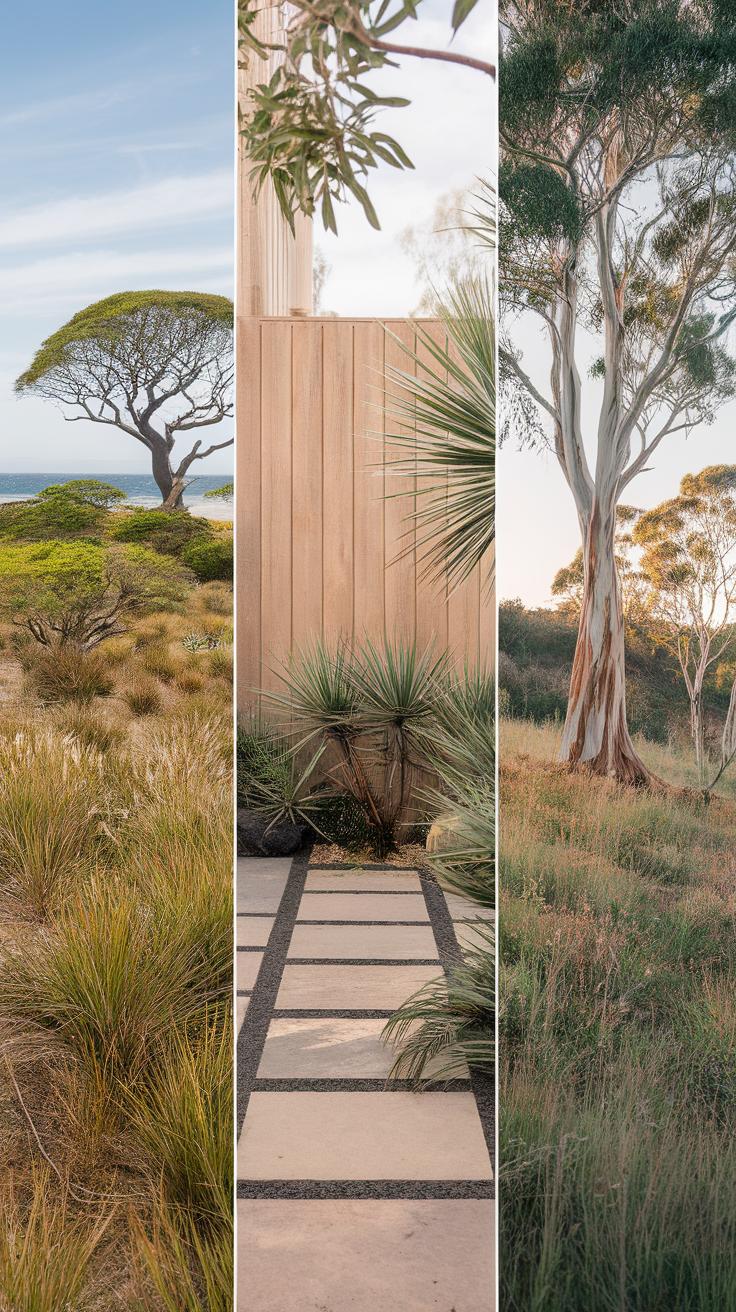
The Royal Botanic Gardens Victoria Native Section
The Royal Botanic Gardens Victoria features a dedicated native section showcasing Australia’s diverse plant life. The garden design balances open spaces with dense shrubbery. Visitors see how native plants thrive in natural groupings rather than formal rows. This approach encourages biodiversity and supports local wildlife.
The space uses plants suited to different soil types and moisture levels, demonstrating practical choices for gardeners. Paths wind through varied plant communities, offering year-round interest with flowering seasons and changing leaf colors. Waterwise methods are part of the design, conserving resources without sacrificing beauty.
Notable examples include banksias, eucalyptus, and wattles. These species are not only hardy but support native bees and birds. The garden shows how careful selection and placement create a functional, stunning environment you can replicate on smaller scales.
Creating Your Own Personal Native Garden
Your garden should reflect your needs and surroundings. Start by choosing plants adapted to your local climate and soil. Consider the space you have—whether a balcony, small yard, or larger block—and select species that fit comfortably.
Think about how you want to use the garden. Do you prefer a quiet retreat, a space for children to explore, or a habitat to attract birds? This focus guides plant choices and layout. For example, low-maintenance shrubs work well for busy lifestyles, while flowering natives add color and attract pollinators.
Try mixing textures, heights, and colors to suit your personal taste. Using native grasses with taller trees creates layered interest and offers shelter for wildlife. Ask yourself, which plants feel right for you? Experiment with small sections first and see how your garden evolves. Your native garden will grow into a unique place suited to your lifestyle and local environment.
Conclusions
Designing a garden with Australian native plants can transform your outdoor space into a sustainable and vibrant environment. You gain the benefits of supporting local ecosystems while enjoying low maintenance gardening. By selecting plants suited to your soil and climate, grouping them by water needs, and considering garden uses, you build a garden that lasts.
Your native garden becomes more than a collection of plants; it reflects the rich landscapes of Australia. With proper care and smart design choices, you can create a garden that welcomes native birds, mammals, and insects. Start your journey with practical steps and see how your garden grows into a natural, living space over time.



